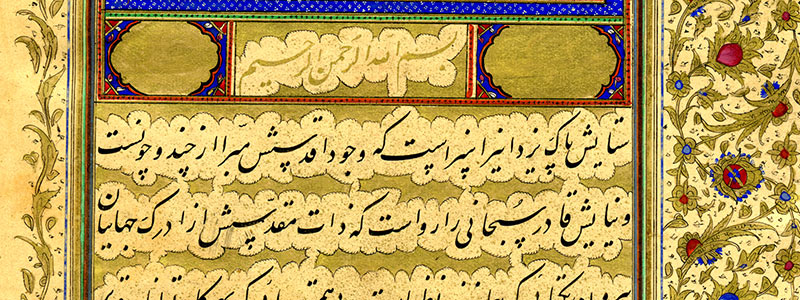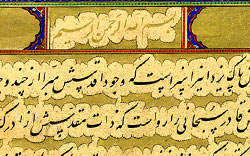Mohammad Hosayn Shirāzi was born in Shiraz in the nineteenth century. Based on information drawn from his own writings, it appears that he came to Iran in his youth after his calligraphic hand had already come into its own. With the help of one of the nobles of the court, he gained an audience with Nāser-al-Din Shāh (r. 1848-1896), to whom he presented several pages of calligraphy on which he was working from Jalāl-al-Din Rumi’s book of poetry Masnavi. The Shāh enthusiastically praised his work and commanded him to complete the book. This meeting occurred in 1862 CE and from that time on, Mohammad Hosayn was known by the title ‘The Scribe of the Soltān’ (kāteb al-soltān).
Hosayn’s extant works indicate that he was mostly interested in manuscript writing and did not spent much time creating individual artistic works of calligraphy. His works were produced between 1854 to 1898 CE.
There is no information about his masters or his students, though apparently he mostly instructed princes and members of the court. He must be counted amongst the masters who wrote Nasta‘liq with the lightest touch since, though he produced many works, he did so with great precision and attention to detail. There is no information about where he may have been buried, but it appears that he was alive at least until 1316 AH/1898 CE, since a copy of a manuscript that he wrote of Tārikh-e Soltān Mahmud bears this date.




